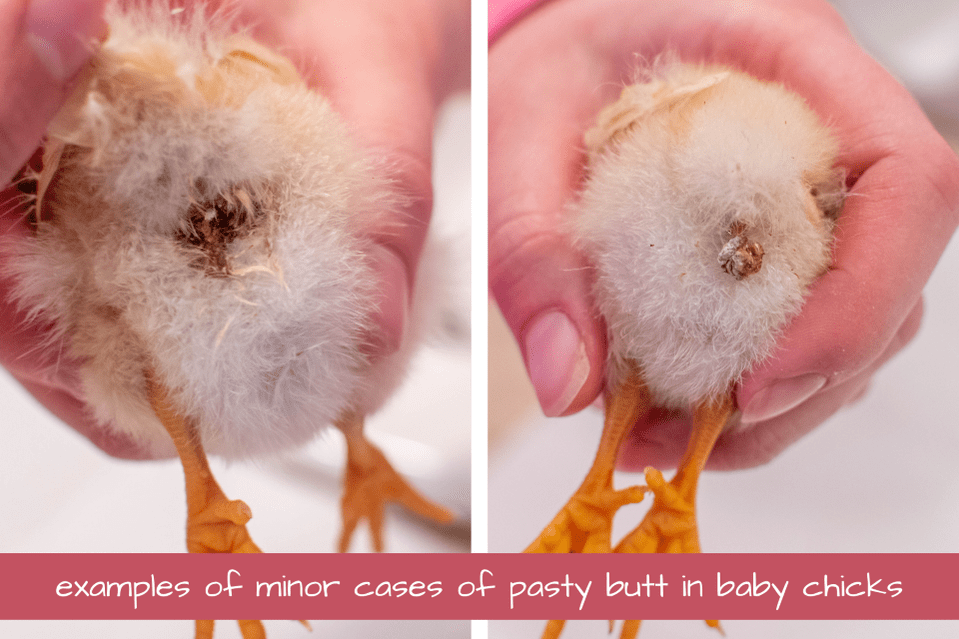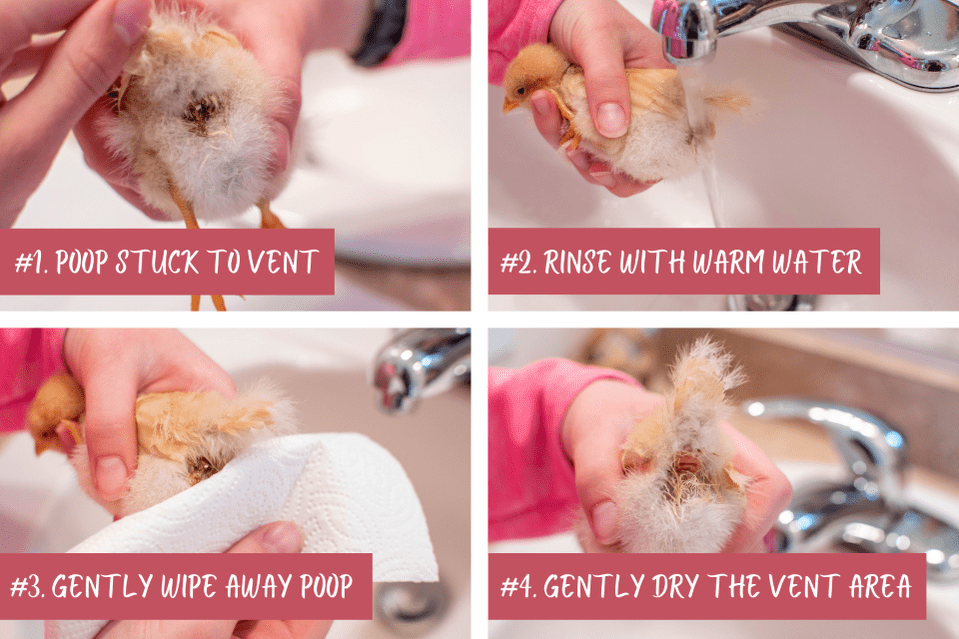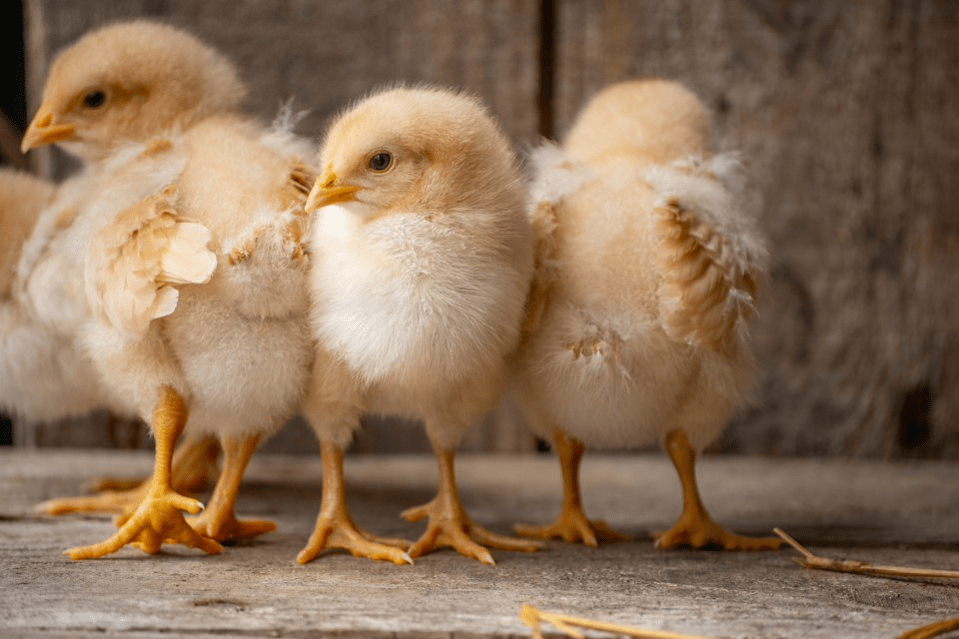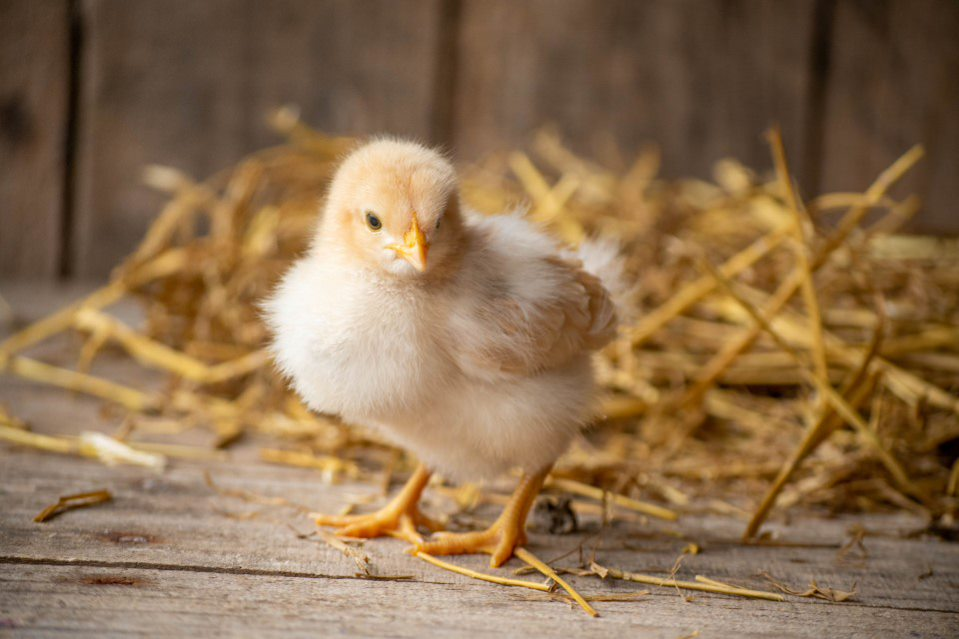Chickens & Flocks
by Alexa Lehr | 05.07.2021

It sounds gross, and to be honest, it is gross. Pasty butt is basically the chick version of constipation, and we all know that can’t feel good! Not only is it uncomfortable for the chick, but it can also be fatal. Pasty butt is one of the most common problems you will encounter when raising baby chicks. Learning how to recognize, treat, and prevent it will be essential for raising a healthy brood!
What is Pasty Butt?
Pasty butt (also known as pasted vent, pasting, paste up, or sticky bottoms) is when the chick’s droppings (poop) sticks to the chick’s vent (where poop exits the body). The poop then clogs the vent and sometimes will even dry onto the vent, creating an even bigger blockage. This prevents the chick from properly eliminating body waste, which then builds up within the chick’s body. The built-up waste clogs up the chick’s digestive system and allows harmful bacteria to proliferate within the chick’s body. Pasty butt will eventually become fatal if it is not dealt with immediately.
Recognizing Pasty Butt

Thankfully, recognizing pasty butt is very easy! You simply look for any droppings that are stuck to the down feathers around the chick’s vent. Pasty butt can range in size from a small dropping stuck to the vent to a large mass of droppings stuck to the vent.
As soon as you get new chicks you should examine them for pasty butt. You will want to check each chick daily to ensure you address any pasty butt issues immediately. Pasty butt is most common in young chicks up until they reach 2 weeks of age. Any cases after that age may indicate a health issue.
Watch your chicks’ behavior too. While identifying pasty butt is usually quite simple just by looking at the chick’s vent region, you may also see behavior changes if it has started to cause serious issues.
Chicks with serious cases of pasty butt may become lethargic. They may not move around the brooder as vibrantly as other healthy chicks. Pasty butt is also very irritating for chicks. You will often notice a chick craning its head around to try and ‘preen’ the poop clump off. A decrease in water and feed consumption is an indicator that the chick is in serious trouble.
Causes of Pasty Butt
Pasty butt issues are prevalent in young chicks because many factors can trigger pasty butt. Anything that causes the chicks to have loose, soft, and sticky droppings can lead to pasty butt. One or two cases of pasty butt that clear up quickly could be attributed to the mild stress of adjusting to new surroundings. However, repeated or numerous cases of pasty butt can signify a larger cause. Theses are the common triggers to rule out:
- The chicks are too cold- often accompanied by a decrease in activity, huddling under the heat source, and loud cheeping
- The chicks are too hot- often accompanied by avoidance of the heat source and possibly panting
- Improper feeding- certain foods can lead to pasting, including soybeans which are often found in cheap chick feeds
- Improper hydration- water that is too cold can lead to pasting as can giving the chicks too much sugar water
- Stress- anything that causes the chicks stress can lead to pasty butt cases
- Age- since young chicks are the most sensitive to temperatures and stress, it makes sense that pasty butt issues are most prevalent in young chicks up to 1 week of age
- Disease- pasty butt issues in older chicks could indicate a disease
Chicks that have been shipped through the mail may be especially prone to pasty butt. The stress from shipping, the chilling, and the possible dehydration that may have occurred can all cause the chicks to have pasty butt. Chicks that are left in the incubator for too long during a draggy hatch may be more prone to pasty butt too due to dehydration.
When pasty butt occurs in isolated cases, then the likely causes are from being chilled, over heated, or some other stress-related factor. If the cases are more widespread and affect most of the chicks in the brood, then the cause is more likely from an improper diet or improper hydration.
Treating Pasty Butt
Thankfully, pasty butt is fairly easy to treat. Be forewarned though, it can be a little gross! Removing crusted balls of poop from a chick’s rear isn’t exactly what everyone signed up for when they bought chicks. However, pasty butt is a serious issue, and it must be dealt with quickly. The sooner you deal with minor cases of pasty butt, the easier it will be to treat.
When pasty butt first starts to form, the droppings stuck to the vent will still be soft and easy to remove. The longer the condition is left un-attended, the messier the treatment becomes. The droppings will build-up and harden to the vent, making them much harder to remove without causing the chick some discomfort and pain.
Here’s a step-by-step guide for properly treating pasty butt:

Tips and Tricks for Treatment
- Treating pasty butt requires a bit of caution and finesse. When removing the droppings, be very gentle. You want to avoid tearing out any down feathers or irritating the sensitive skin around the vent. Be aware of the navel opening, which is located on the chick’s belly below the vent. The navel, or belly button, is where the chick absorbed the egg yolk prior to hatching, and it will be just newly closed and still sensitive. Always make sure you are treating the area around the chick’s vent, not the navel.
- To prevent any irritation or the accidental pulling of down feathers, wipe down instead of pulling on the droppings. Soaking the droppings in warm water will help soften the droppings and make them easy to remove. Instead of running warm water over the dried droppings, you can also hold the chick securely over a bowl of warm water. Hold the chick so that just the pasted droppings are submerged in the warm water. Allowing the droppings to soak in the warm water for a few seconds will soften them and make them easy to wipe off. You may even notice some of the droppings falling off while you are soaking the chick’s bottom.
- Take extra care to not chill the chick. Chilling can lead to repeated issues with pasty butt, which is what you are trying to treat! Keep the chick as dry as possible, only dampening the affected area around the vent. Thoroughly dry the chick’s bottom after removing all the poop. A dry rag or paper towel often does a good job of absorbing extra moisture from the down feathers around the vent.
- After the chick has been placed back in the brooder, make sure it returns to normal chick activities within a few minutes of the pasty butt treatment. After getting warmed up under the heat source, the chick should then be interested in eating, drinking, and interacting with the other chicks.
- Keep an eye on the poops that the chick does after being treated for pasty butt. You can prevent any future droppings from sticking to the vent area by applying a little Vaseline or petroleum jelly to the vent region. If the droppings do stick to the down feathers again, gently wipe the soft droppings away with some paper towel. *Remember, repeated pasty butt problems are an indication of an improper diet or improper hydration.
Preventing Pasty Butt

No chick keeper wants to deal with pasty butt in the first place, so what measures can you take to prevent it? Here are the most impactful preventative measures you can implement in the brooder to prevent pasty butt:
- Proper Temperature: Ensure the brooder temperature is correct- watch the chicks’ behavior for signs of chilling or overheating
- Limit Stress: Prevent any conditions that may cause stress- excessive handling or loud, scary noises can all cause stress in the brooder
- Limit Sugar Water: Don’t overdo the sugar water- a sip of sugar water is helpful for giving the digestive system a boost, but too much sugar water can lead to pasting
- Room Temp Water: Keep the water at brooder temperature- chicks that drink cold water are more prone to pasty butt
- Soy-Free Feed: Feed a high-quality chick starter feed- ideally choose a feed that is soy free, Grubbly Little Pecks chick starter feed is a great soy-free option, made with insects and plants to mimic a chick's natural diet.
- Offer Some Chick Scratch: chick scratch can be fed to chicks who are 24-48 hours old, the scratch grains will promote firm droppings and the chicks’ are still receiving essential nutrition from the egg yolk they absorbed prior to hatching. When introducing food outside of their chick feed, offer chick grit to aid their digestion.
- Natural Supplements: Provide some natural supplements- a few treats that help with pasty butt include chopped whole oats, scrambled eggs, or crushed corn
If you are having repeated problems with pasty butt, consider offering your chicks some natural supplements or switching your brood over to a high-quality, soy-free chick starter feed. If you give your chicks any natural supplements or treats in addition to their feed, make sure you supply some chick grit as well to help the chicks digest the new foods. Chick grit can be bought at the feed store or you can give your chicks a clean grass or herb clump with dirt attached to the roots. The dirt will function as grit and your chicks will have a blast with the greenery!
Here’s to a Healthy Brood!

While pasty butt is one of the most common issues in young chicks, preventing and treating this common issue is fairly easy when you are armed with the right knowledge. With a watchful eye and proper brooder management, your chicks will thrive and grow into healthy adult chickens!
ncG1vNJzZmifoqqvo7jYn5irpaNjsLC5jpujqJ%2BjZMGpsYyfo7KdomTAsbvTraCnn12Wu6V506ucmqyZo7RuvMCsq7JlkqrBtXnIp2ScoJmYuLQ%3D